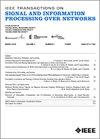异构多智能体系统抗拜占庭攻击的弹性输出遏制
IF 3
3区 计算机科学
Q2 ENGINEERING, ELECTRICAL & ELECTRONIC
IEEE Transactions on Signal and Information Processing over Networks
Pub Date : 2025-07-28
DOI:10.1109/TSIPN.2025.3592314
引用次数: 0
摘要
本研究的重点是解决异构连续时间多智能体系统的分布式拜占庭弹性输出遏制问题。受数字孪生技术(创建物理对象或系统的虚拟副本)的启发,本作品引入了一个与传统网络物理层平行的虚拟层,称为孪生层。孪生层比网络物理层更安全,通过实时数据处理和仿真生成各agent的安全参考轨迹。此外,它将针对拜占庭攻击(BA)的弹性输出遏制解耦为两个防御子方案:一个在双层上针对拜占庭边缘攻击(向邻居发送错误和不同的消息),另一个在网络物理层上针对拜占庭节点攻击(伪造输入信号)。在双层上,我们利用一种新颖的安全质心方法开发了一种拓扑可分配的分布式弹性估计器,该方法通过添加最小比例的可信边来增强双层的弹性。证明了实现对领导集的强$[({n+1})f+1]$-鲁棒性足以保证孪生层的弹性。在网络物理层,我们设计了一个分散的自适应控制器来对抗拜占庭节点攻击,并且还可以处理潜在的层间控制器故障。该自适应控制器具有指数收敛的特点,其误差界可以明确地设定。因此,我们设法解决了针对BAs的弹性遏制问题,其中受拜占庭节点攻击的代理也可以实现输出遏制,而不仅仅是普通代理。仿真实例证实了这种新开发的分层协议的有效性,其中正常和拜占庭追随者都聚集在由正常领导者形成的动态凸包内。本文章由计算机程序翻译,如有差异,请以英文原文为准。
Resilient Output Containment of Heterogeneous Multi-Agent Systems Against Byzantine Attacks
This study focuses on addressing distributed Byzantine-resilient output containment issues for heterogeneous continuous-time multi-agent systems. Inspired by the digital twin technology which creates a virtual replica of a physical object or system, a virtual layer named twin layer is introduced in this work, which is parallel to the conventional cyber-physical layer. The twin layer is more secure than the cyber-physical layer, which generates the secure reference trajectory of each agent via real-time data processing and simulation. Moreover, it decouples the resilient output containment against Byzantine attacks (BA) into two defense sub-schemes: One on the twin layer against Byzantine edge attacks (sending wrong and different messages to neighbors) and the other on the cyber-physical layer against Byzantine node attacks (falsifying input signals). On the twin layer, we develop a topology-assignable distributed resilient estimator by utilizing a novel secure centroid approach, which enhances the resilience of the twin layer by adding a minimal fraction of trusted edges. It is proved that achieving strong $[({n+1})f+1]$
求助全文
通过发布文献求助,成功后即可免费获取论文全文。
去求助
来源期刊

IEEE Transactions on Signal and Information Processing over Networks
Computer Science-Computer Networks and Communications
CiteScore
5.80
自引率
12.50%
发文量
56
期刊介绍:
The IEEE Transactions on Signal and Information Processing over Networks publishes high-quality papers that extend the classical notions of processing of signals defined over vector spaces (e.g. time and space) to processing of signals and information (data) defined over networks, potentially dynamically varying. In signal processing over networks, the topology of the network may define structural relationships in the data, or may constrain processing of the data. Topics include distributed algorithms for filtering, detection, estimation, adaptation and learning, model selection, data fusion, and diffusion or evolution of information over such networks, and applications of distributed signal processing.
 求助内容:
求助内容: 应助结果提醒方式:
应助结果提醒方式:


